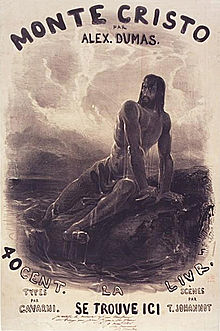The Count of Monte Cristo
Alexandre Dumas

Description
An adventure novel by French author Alexandre Dumas completed in 1844 - one of the author's most popular works.
| Length | Emails required |
|---|---|
| 15,404 lines | 386 (based on one per day) |
Preview - part114 of386
“Yes; this morning we breakfasted with him; we rode in his carriage all day, and now we have taken possession of his box.” “You know him, then?” “Yes, and no.” “How so?” “It is a long story.” “Tell it to me.” “It would frighten you too much.” “So much the more reason.” “At least wait until the story has a conclusion.” “Very well; I prefer complete histories; but tell me how you made his acquaintance? Did anyone introduce you to him?” “No; it was he who introduced himself to us.” “When?” “Last night, after we left you.” “Through what medium?” “The very prosaic one of our landlord.” “He is staying, then, at the Hôtel de Londres with you?” “Not only in the same hotel, but on the same floor.” “What is his name; for, of course, you know?” “The Count of Monte Cristo.” “That is not a family name?” “No, it is the name of the island he has purchased.” “And he is a count?” “A Tuscan count.” “Well, we must put up with that,” said the countess, who was herself from one of the oldest Venetian families. “What sort of a man is he?” “Ask the Vicomte de Morcerf.” “You hear, M. de Morcerf, I am referred to you,” said the countess. “We should be very hard to please, madam,” returned Albert, “did we not think him delightful. A friend of ten years’ standing could not have done more for us, or with a more perfect courtesy.” “Come,” observed the countess, smiling, “I see my vampire is only some millionaire, who has taken the appearance of Lara in order to avoid being confounded with M. de Rothschild; and you have seen her?” “Her?” 20183m “The beautiful Greek of yesterday.” “No; we heard, I think, the sound of her guzla, but she remained perfectly invisible.” “When you say invisible,” interrupted Albert, “it is only to keep up the mystery; for whom do you take the blue domino at the window with the white curtains?” “Where was this window with white hangings?” asked the countess. “At the Rospoli Palace.” “The count had three windows at the Rospoli Palace?” “Yes. Did you pass through the Corso?” “Yes.” “Well, did you notice two windows hung with yellow damask, and one with white damask with a red cross? Those were the count’s windows.” “Why, he must be a nabob. Do you know what those three windows were worth?”